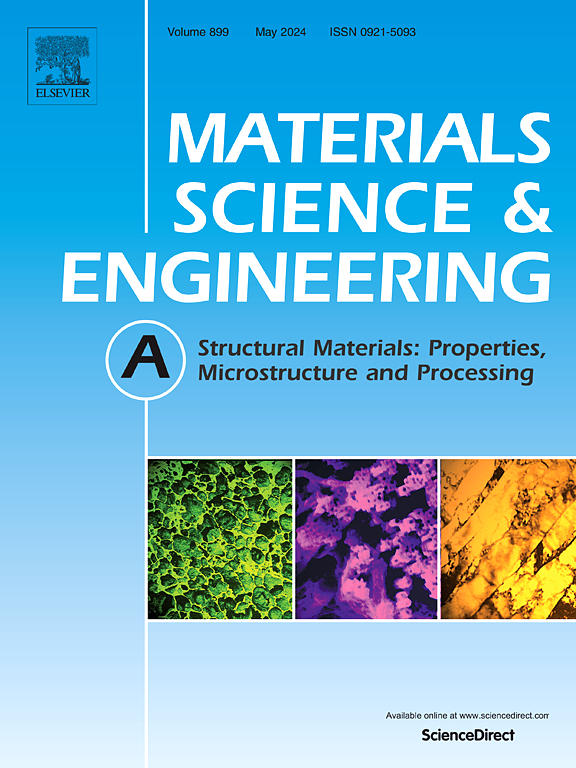A high-strength and ductile titanium alloy fabricated by metal injection molding
IF 6.1
2区 材料科学
Q1 MATERIALS SCIENCE, MULTIDISCIPLINARY
引用次数: 0
Abstract
This study presents a high-strength and ductile titanium (Ti) alloy fabricated by introducing 0.5 wt% graphite into a Ti-Al-Mo-V-Cr-based alloy (termed as ‘A-0.5C’) using metal injection molding (MIM), with the comparison of non-graphite doped alloy (termed as ‘A’). The microstructural analysis shows numerous TiC precipitates distributed along grain boundaries, forming a coherent interface with the Ti matrix. Furthermore, carbon doping promotes a multi-stage densification mechanism, efficiently reducing residual porosity and further enhancing final ductility. The A-0.5C specimen exhibited an ultimate tensile strength of 1277.8 ± 5.4 MPa and a total elongation of 11.7 ± 0.3 %. The strengthening effects arise from solid solution, grain refinement, and secondary phase. In addition, the coherent interface between the TiC precipitate and matrix helps to relieve stress concentration, and resist crack initiation and propagation, benefiting ductility. Our developed Ti alloy fabricated by MIM surpasses the strength of 1100 MPa, achieving the high-strength level while maintaining excellent ductility. This study paves the way for high-performance Ti alloys in advanced engineering applications.
一种通过金属注射成型制造的高强度和延展性钛合金
本研究采用金属注射成型(MIM)技术,在Ti- al - mo - v - cr基合金(称为“a -0.5 c”)中引入0.5 wt%的石墨,制备了一种高强度和延展性的钛(Ti)合金,并与未掺杂石墨的合金(称为“a”)进行了比较。显微组织分析表明,沿晶界分布有大量TiC析出物,与Ti基体形成共格界面。此外,碳掺杂促进了多阶段致密化机制,有效地减少了残余孔隙率,进一步提高了最终延展性。a -0.5 c试样的抗拉强度为1277.8±5.4 MPa,总伸长率为11.7±0.3%。固溶、晶粒细化和二次相的强化作用。此外,TiC析出物与基体之间的共格界面有助于缓解应力集中,抑制裂纹的萌生和扩展,有利于塑性。我们开发的MIM钛合金强度超过1100mpa,在保持良好延展性的同时达到了高强度水平。本研究为高性能钛合金在先进工程中的应用铺平了道路。
本文章由计算机程序翻译,如有差异,请以英文原文为准。
求助全文
约1分钟内获得全文
求助全文
来源期刊

Materials Science and Engineering: A
工程技术-材料科学:综合
CiteScore
11.50
自引率
15.60%
发文量
1811
审稿时长
31 days
期刊介绍:
Materials Science and Engineering A provides an international medium for the publication of theoretical and experimental studies related to the load-bearing capacity of materials as influenced by their basic properties, processing history, microstructure and operating environment. Appropriate submissions to Materials Science and Engineering A should include scientific and/or engineering factors which affect the microstructure - strength relationships of materials and report the changes to mechanical behavior.
 求助内容:
求助内容: 应助结果提醒方式:
应助结果提醒方式:


